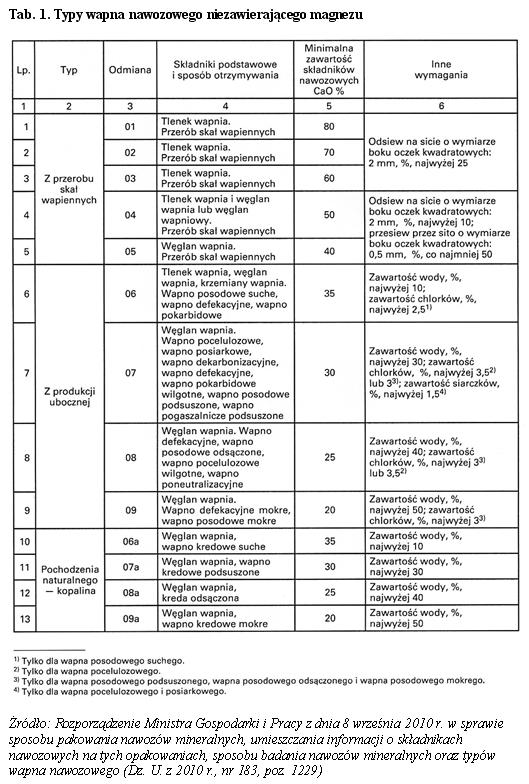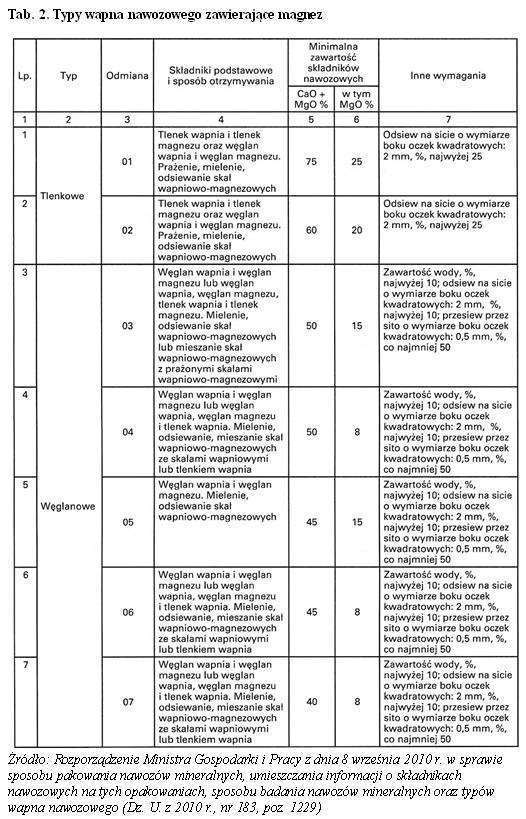Liming materials are divided into two groups: oxide and carbonate, and magnesium-free and magnesium-containing. Carbonate limes are obtained by grinding and screening limestone rock, while oxide limes are produced by calcination. Liming materials are divided into two groups: oxide and carbonate, and magnesium-free and magnesium-containing. Carbonate limes are obtained by grinding and screening limestone rock, while oxide limes are produced by calcination. Some types of carbonate lime are by-products of specific technological processes. The degree of fineness determines the deacidification properties of carbonate lime fertilisers, particularly dolomite fertilisers. In the case of oxide lime and soft limestone such as chalky lime, the degree of fineness is less important. In both oxide and carbonate lime fertilisers, the active ingredient content is expressed as calcium oxide (CaO) or as the sum of calcium oxide and magnesium oxide (CaO +MgO) in lime types containing magnesium. In the case of oxide-based liming products, the sum of the effective ingredients shall be at least 60 %, and in the case of carbonate-based liming materials, 40 %.
The quality requirements for magnesium-free (Table 1) and magnesium-containing (Table 2) lime types are set out below (Journal of Laws 2010, No. 183, item 1229).


Source:
Regulation of the Minister of Economy of 8 September 2010 on the method of packaging mineral fertilisers, placing information on fertiliser components on these packages, the method of testing mineral fertilisers and types of fertiliser lime (Journal of Laws 2010, no. 183, item 1229) – link to regulation
